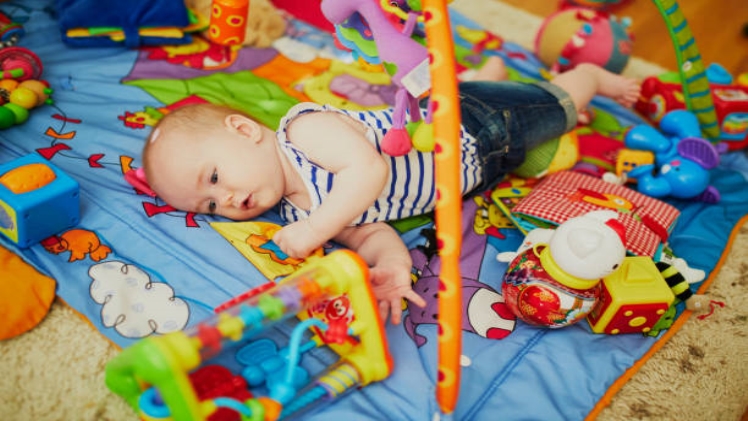A play mat can be beneficial for babies at many different stages of development. Babies will start exploring it in their tummies around three months. By four months, they’ll probably start rolling over and benefit from the practice. At six months, they’ll reach for their toys and probably be pulling up on all fours in preparation for crawling. Here are some things to keep in mind as your baby begins more information to explore the play mat.
3-6 months
A play mat provides a safe, comfortable space for a child to roll around on. A thin crib mattress can double as a play mat. A cotton (washable) rug is a favorite play mat for rolling babies. A plain play mat is best for a rolling baby, as colorful, patterned play mats can overwhelm a child, disrupting their ability to focus. However, a play mat can help parents maintain their home and childcare schedules.
The ideal age for a baby to be on a play mat is around three months, as this is when your child has developed stronger neck muscles. They have better eye and trunk control. They have also begun to roll and turn their heads. A play mat should be used for tummy time, as recommended by the American Academy of Pediatrics. However, many parents prefer a play gym that is safe for both mom and baby.
Stimulates auditory development
One way to support your baby’s auditory development is to sing to him or her softly and gently massages his or her feet. Both touch and auditory stimulation are important for brain development. Additionally, locate the source of sound and support the baby’s auditory development by talking to him or her or tapping your toes to the rhythm. Several other ways to stimulate your child’s brain are listed below. Keep reading to learn more.
The third trimester of gestation is when babies develop their ability to perceive sound check our website. Without this experience, the language and socioemotional attachment of newborns may not develop normally. Early auditory experiences in hospitalized preterm infants can reverse language deficits, although many causes remain unknown. There are many risks associated with prenatal auditory stimulation programs and overstimulation. This is especially important when the brain is developing.
3-6 months is the ideal age for a baby to go on a play mat
A play mat is an important tool in the early development of your child’s brain and body. During tummy time, your baby exercises his neck, shoulders, and back muscles. This is a necessary skill for rolling over, sitting up, and crawling. A play mat provides a comfortable surface for your baby to spend time on his tummy and encourages him to interact with toys in the surrounding area.
Babies at this age enjoy interacting with their caregivers, and they may turn to you to sing lullabies. Similarly, your baby may make fussy noises and turn away from you when you speak. But you should take note of when your baby needs a break. If she’s already showing signs of fatigue or boredom, take a break.
It promotes motor skills
The early months are critical in developing hand and finger muscles. By nine to 10 months, babies can’t use their two hands to grasp objects without force. By nine to twelve months, they can hold objects in one hand but cannot use two hands together. By the time they’re 18 months, they’re pointing, grasping, and releasing objects with their fingers. By this time, they’re able to distinguish different body parts.
When infants are mobile, they can practice a variety of activities such as painting, drawing, and using play dough. Writing with utensils can also strengthen fine motor skills. Rolling, throwing, and holding balls are also excellent ways to promote motor skills. It’s also important to expose kids to different textures and encourage them to reach for things. While they’re experimenting with new materials, they should be watched to make sure they don’t hurt themselves.
It encourages tummy time
Baby’s benefit from tummy time is numerous. In addition to promoting head control, this exercise promotes the development of motor skills and prevents flat spots on the baby’s head. It is safe and can be started as soon as they are born. It is important to encourage tummy time while your baby is fully awake and under your supervision. Several studies have indicated that babies who spend more time on their tummies experience less sickness and better health.
When your baby is on its tummy, it develops the strength of the muscles in his or her head, arms, and legs. They will eventually be able to hold their head and explore their surroundings. As your baby grows stronger, tummy time will allow him or her to tolerate longer periods of time. If you want to help your baby enjoy tummy time, you can offer toys in a small circle to keep them occupied and strengthen their muscles.
